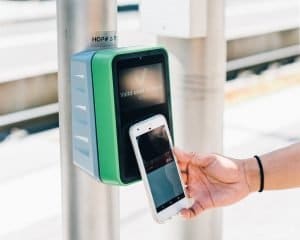ACH Could Become New Retail Payment Method
Last Updated on January 13, 2020 by
ACH (Automated Clearinghouse) has long been a method of payment between enterprise companies and their employees, service providers and customers, and even business-to-business payments, such as corporations to freelancers. It’s a method of direct deposit that’s faster than printing out a check and cheaper than a credit card.
And it may soon become a payment method for retail merchants as well.
ACH is a U.S. financial network that’s used for money transfers and electronic payments. While it’s used primarily as a direct deposit method for large payments, the ACH is growing in payment volume. In Q2 2019, they handled 6.1 billion payments alone, including the following:
- 995 million B2B payments.
- 1.6 billion Internet payments.
- 35.2 million P2P payments through apps like Venmo and Dwolla.
(Each of these were a year-over-year increase of 12%, 13%, and 20% respectively.)

As more companies want payments in real-time and with lower fees, ACH has begun adding same-day processing and lower costs, charging between 20 cents and $1.50, or a percentage between 0.5% – 1.5%. Compare that to regular credit card processing fees that can reach as high as 3.5% of a transaction, and take 4 or more days to post.
According to the October 2019 issue of Digital Transactions magazine, there are two types of ACH payments merchants can use: First, there’s the push payment, so called because the customer initiates the payment and pushes it to the merchant. The customer gets to control the timing of the payment, and will use it as a one-time payment, or to manage payments within a window of time.
And as you would expect, there are also pull payments, which is where the merchant has permission to pull the payment from the customer’s account. The merchant pulls the payment on a specific date. This is more along the lines of an automated regular payment, such as utilities and rent. But rather than dinging a credit or debit card, they can pull directly from a checking or savings account. This is an ideal option for subscription-based retailers, especially since it won’t result in as many chargebacks for customers who forgot to cancel their subscription.
To send ACH credit payments, customers need to provide their bank routing number, account number, and name on the account. The merchant also needs a bank account or to work with a payment processor that can manage ACH transfers.
ACH transactions are also encrypted, just like credit card transactions, and are typically web-based This makes it ideal for online merchants or service providers who interact with customers mainly by phone or online. Getting started is still a time-consuming process for consumers, which makes it less than ideal for customers making impulse buys — there’s a little forethought involved.
Merchants ad customers can use an ACH-enabled app like Venmo or Dwolla to accept payments. They only need to educate their customers on how and why to use these apps, and then show them how to add their own business as an accepted merchant.
Imagine walking into a coffee shop where, instead of paying for your latte with a debit card, you simply tap your Dwolla app and the payment is made. The customer is happy, because this is as simple as an Apple Pay or Google Wallet transaction, but the merchant is even happier, because they’re not paying as much for the credit card transaction, and the payment processes on the same day, not a few days later.
This is also a boon to high-risk merchants, because it means you can accept and process payments in another format. For some merchants who are looking to reduce the amount of cash they have on hand, ACH payments are a great way to reduce the risk of theft and loss.
To learn more about how to accept ACH payments or find other resources as a high-risk merchant, please visit our website or call us at (800) 408-0095.
Photo credit: TriMet (Flickr, Wikimedia Commons 2.0)
We appreciate you following Corepay’s blog. Let’s collaborate, send us your article suggestions, questions, and/or feedback to: [email protected].




